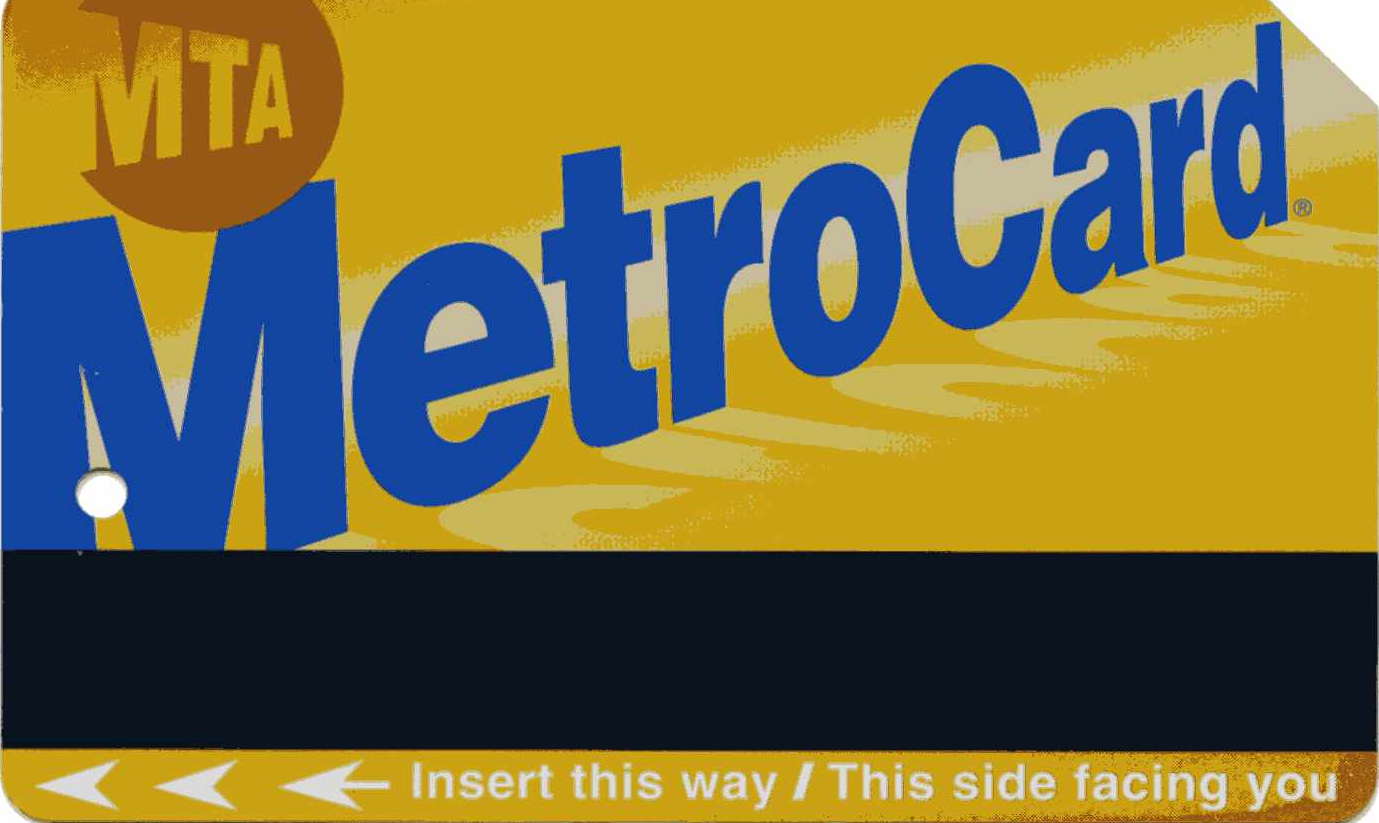The subway is the bloodstream of New York. Without it, the entire economy of the region would grind to a halt. In fact, we got a real life example after Hurricane Sandy when some workers attempted to get to their offices before the subway was back up and running and the resulting gridlock stretched for miles. And while there may be 500,000 taxi rides per day, on a recent October day there were almost 6 million subway rides. The subway is also a great equalizer. While the demographics of the subway to tend a little poorer than the city overall, every car still includes rich and poor, cultures from all over the world, students, retirees, tourists, workers, shoppers, and just about every kind of person imaginable. And besides, it's cheap.
So let's start with how to pay for your subway ride(s). You first need to purchase a Metrocard from one of the vending machines located in every station. The machines are quite multi-colored so you can't miss them. First of all, there's a $1.00 fee to buy a new Metrocard. There are two kinds of Metrocards: regular and unlimited. Regular Metrocards are like debit cards. Each time they are swiped, they deduct the $2.50 fare for a ride. These kinds of card can also be swiped up to four times at once enabling four people to share a single card. So for a family of four, one ride requires a card with at least $10.00 on it. The other kind of Metrocard you can buy is an unlimited pass. This type doesn't deduct the fare on each swipe but simply allows an endless number of swipes over a certain period. There is a 7-day option (for $30) or a 30-day option for ($112). Because these are unlimited they can't be shared and each rider must have their own card. Both types of Metrocards can be refilled at the vending machines when they run out of time or money which avoids the $1.00 fee. As a final hurdle, the actual purchasing of the Metrocards has some needless complications. You can't buy cards in bulk so you must purchase each card one at a time. You can use a credit or debit card, but for some reason the vending machines don't allow more than one or two purchases per card, so make sure you have a few different credit cards if you're buying a bunch of Metrocards. If you're bank account is from outside the United States, you might be stumped by the requirement of a zip code, but you can bypass the zip code question by hitting "enter" on the number pad when the zip code question comes up. You can also pay cash for the Metrocard but the vending machine will only give out a maximum of $8.00 change, so this infuriatingly means that to purchase a 7-day pass ($31 including the fee) the machine won't accept two $20 bills. So while you don't need exact change, you will need some smaller bills. Now that you've purchased your Metrocard, head to the turnstile while holding the Metrocard on your right and with the black magnetic strip facing left.
Whew! You're finally in, ready for your first subway journey! Now what? Well, there are 24 different lines in the NYC subway. Each line is designated by a letter or number. The particular letter or number is meaningless. It's just the name of the line. So we have, for example, a Q train, a 7 train, a D train, a 4 train, etc.
 |
| The N train pulling into the last top, Ditmars Blvd. |
Only a few more easy tips and you'll be on your way! Figuring out which direction to travel on the subway is easy. The subways run underneath New York's streets, which means in Manhattan they are always going North, South, East or West, just like our street grid. Most trains go North/South. If you need to go generally North, take an Uptown train. And if you need to go South take a Downtown train. That's what the signs in the station say so it's easy to figure out. And finally, there are no fare zones in New York City, so once you swipe your Metrocard, you can travel to any of the 468 stations. Plus the subway runs 24 hours a day so it is there at any time!
Finally, a lot of my customers are concerned about safety on the subway. There's lots of great old movies that depict the subway as a kind of crime-filled hellhole. And while it used to be much more dangerous, as of 2007 the odds of being a victim of a crime on the subway was roughly equal to being hit by lightning. It's probably even less likely these days. And while the trains arrive much less frequently after midnight (every 20-30 minutes) they are still crowded and hence very safe. Just check out this picture I took of the 7 train at about 1:30 AM one morning.
The subway will be your best ally when travelling in New York City. Whether travelling to the beaches of Brooklyn or the parks of The Bronx, the subway will get you there safe and fast. And what if you get lost? Just ask someone. New Yorkers are actually some of the kindest and most helpful big city dwellers in the world and will be happy to show off their local subway expertise and get you to your destination.



Is there a subway app? Seems like something really useful.
ReplyDeleteIs there a subway app? Seems like something really useful.
ReplyDelete